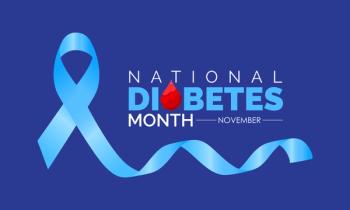
Specialty Pharmacy: Appropriate Selection from a Blossoming Pipeline
Optimal channel selection should be made with the patient’s best interest at the center of the decision.
Specialty pharmacy, which has been in existence for somewhere between 20 and 30 years, traces its roots to the discovery of safe and effective treatments for previously untreatable disease states. These centers emerged on a large scale to meet the unmet needs of patients with complex conditions, and initially included therapies for organ transplantation, HIV, and multiple sclerosis.
This emergence coincided with the proliferation of drugs to treat widespread chronic conditions—the same drugs that created the recent “patent cliff” experienced by the pharmaceutical industry over the past 5 years. Buoyed by countless blockbuster drugs, the existing channels were content to permit another entity to care for their most complex patients. Specialty pharmacies continued to function as a niche channel, but began to serve increasingly more prevalent conditions, including autoimmune diseases, osteoarthritis, cancer, and infertility.
Meanwhile, after only a decade in existence, Stadtlanders was purchased by CVS for $125 million in cash in 2000. Serving as a metaphorical first shot, this acquisition announced both the importance of specialty pharmacy to health care delivery, and the financial viability of this once niche player. Several years after the Stadtlanders acquisition, the global rankings for top grossing drugs in 2015 included 7 specialty drugs within the top 10. Specialty drugs are projected to continue inflating health care costs, placing increased focus and scrutiny on the value added by their distributors.
What makes something special?
The management of the initial successes of specialty pharmacy, organ transplantation and HIV, galvanized the need for such a provider. Both conditions are successfully managed by consistent and appropriate use of medication, with life threatening risks quickly emerging from a failure to do so. Due to the life or death nature of their patients, specialty pharmacies developed an effective navigation strategy for a diverse network of reimbursement providers.
Today, the specialty landscape treats a substantial, yet distinct group of conditions. Enbrel and Humira, 2 of the highest grossing specialty products, are both biologic in origin and administered as an injectable. Other products treat orphan conditions, and require extensive documentation of the product’s use. These innovative and complex therapies are costly, and often require reimbursement and compliance assistance. Ultimately, the pharmaceutical company marketing the product has the greatest influence in channel distribution.
As a subsection of the entire pharmaceutical market, specialty pharmacies still provide niche services as limited and exclusive networks. A limited network allows a manufacturer to better control and document product distribution, or comply with a REMS requirement. As the sole provider, an exclusive distributor is able to provide continuity of care with its patients in order to ensure a drug’s safe and effective usage. Regardless of the level distribution employed, a product marketed as a specialty medication is designed to leverage one or more of the unique services available from a specialty pharmacy.
Many different ways to be special
As specialty costs drive health care spending, and an unprecedented number of drugs near marketing approval, selecting the correct channel for these products is paramount to their success. By matching the capabilities of the pharmacy to the requirements of the product, a manufacturer can create a customized delivery system that harnesses any number of the following attributes:
- Medical office supply: Many medications, including infusion drugs, are only indicated to be administered by a physician. Operating through the mail and over the phone, a specialty pharmacy is equipped to fulfill orders for the growing number of drugs fitting this description. Satisfying clinical and reimbursement requirements, this channel absorbs the burden from providers and patients to facilitate the delivery of the desired therapy.
- Hub services: The proliferation of products requiring REMS programs necessitates monitoring and documenting that a traditional channel would struggle to satisfy. Sponsored by the manufacturer, a specialty hub provides detailed, high-touch services that minimize patient risk while maximizing therapeutic benefit.
- High cost medications: Resulting in part from astronomical development costs, a disproportionate number of specialty therapies cost $100,000 per patient per year. These drugs often represent substantial clinical advancement, as well as a cost burden to insurers and patients. Leveraging the expertise developed in its infancy, specialty pharmacies are equipped to coordinate private and government payers, manufacturers and charitable foundations to provide robust access to these life changing therapies.
- 24/7 clinical support: With injections and infusions largely replacing oral delivery, patient training and education is as much a part of therapy as the medication itself. Specialty pharmacies employ trained pharmacists and nurses who are dedicated to meeting this need. With medications available to treat the critically ill, such as hemophilia and oncology patients, around-the-clock support from a clinical expert is necessary to navigate inevitable complications.
The bright and complicated future of specialty pharmacy
The evolution from niche provider to a primary channel occurred organically, as pharmaceutical companies developed complex biotech products that require a high level of care. As more medications reach the market, controversy regarding access to some of these medications will reach a fevered pitch. At the center of this controversy are medications that are differentiated as specialty solely by price.
No class of products better exemplifies this rift than the PCSK-9 inhibitors. These potent lipid-lowering agents are similar to a traditional drug product: easily administered and requiring minimal clinical support, but significantly costlier than previous agents to treat the same condition. To date, these products are only used in patients for whom traditional therapies are inadequate or intolerable. With clinical outcomes data expected later in 2016, these products could become the standard of care.
This class of drugs will be the first of many, including new medications for Alzheimer’s disease, which exist in a grey area for channel selection. Although distributed at the discretion of the manufacturer, optimal channel selection should be made with the patient’s best interest at the center of the decision. Whether the therapy is complex, expensive, or bearing any number of unique considerations, the choice for distribution must take full advantage of the most beneficial blend of pharmacy distribution. After all, the business and clinical aspects of pharmacy are inseparably intertwined, and the correct choices ultimately impact patient outcomes.
About the AuthorChristopher Ogurchak earned his PharmD degree from the Duquesne University in 2011. Chris served as a pharmacy manager at an independent pharmacy in Southwestern Pennsylvania before transitioning to CVS Specialty Pharmacy as a clinical pharmacist. He is currently enrolled in the Masters of Science in Pharmacy Business Administration (MSPBA) program at the University of Pittsburgh, a 12-month, executive-style graduate education program designed for working professionals striving to be tomorrow’s leaders in the business of medicines.
Newsletter
Stay informed on drug updates, treatment guidelines, and pharmacy practice trends—subscribe to Pharmacy Times for weekly clinical insights.


















































































































































































































